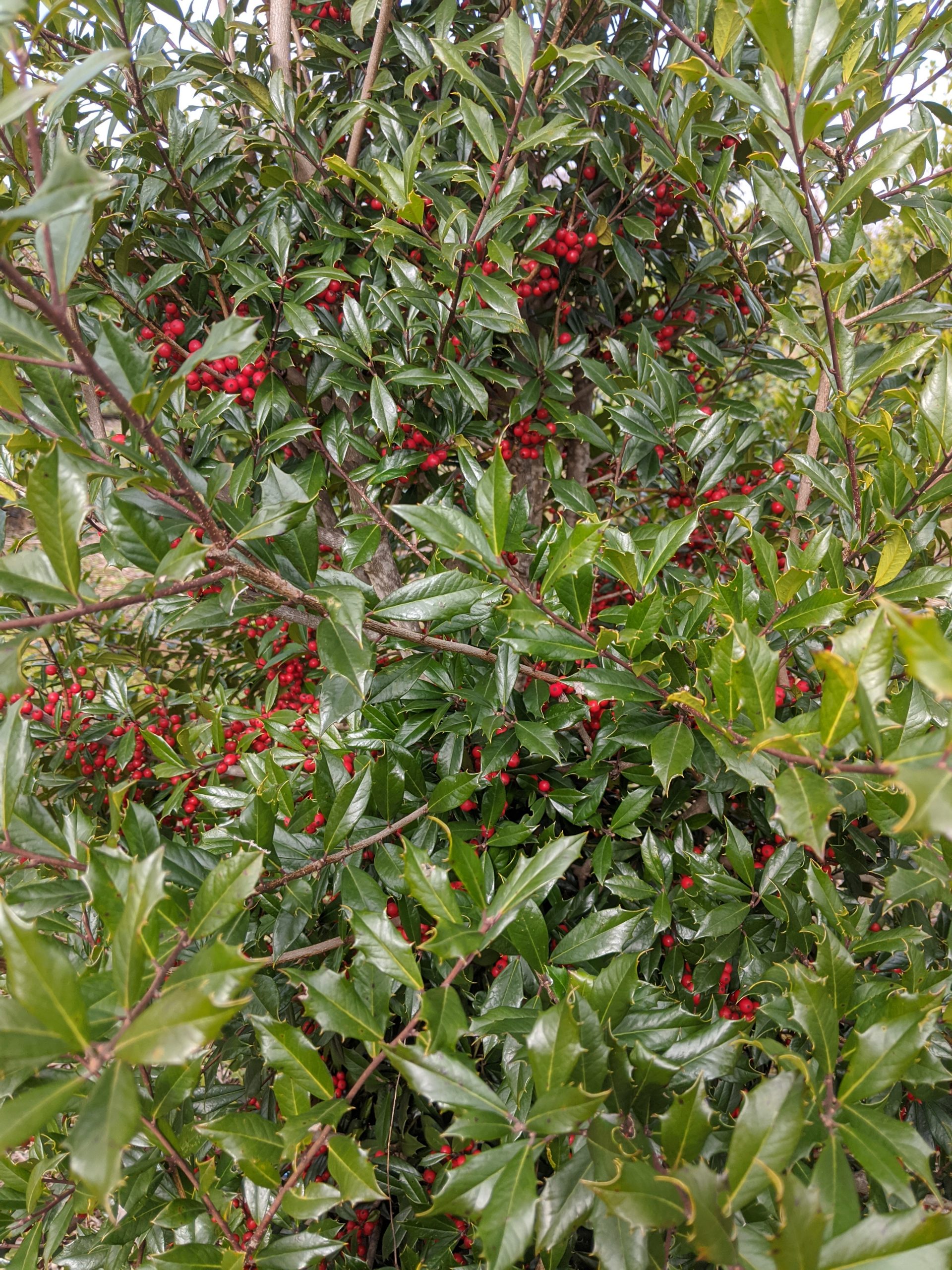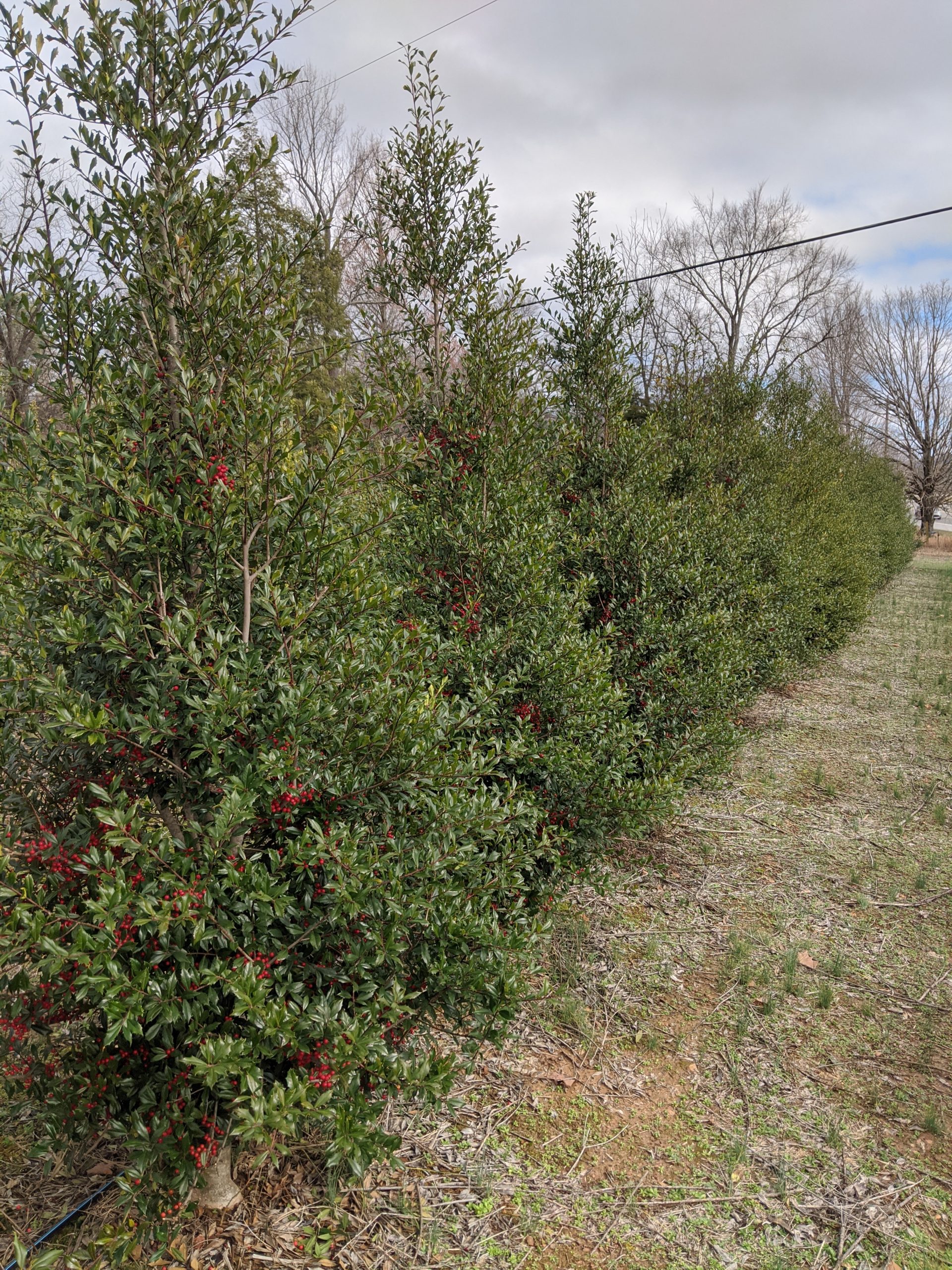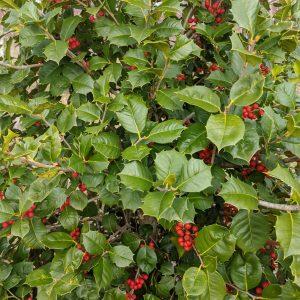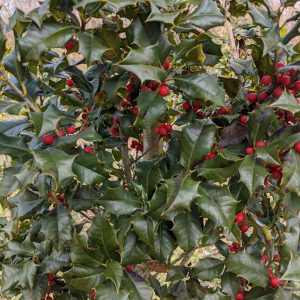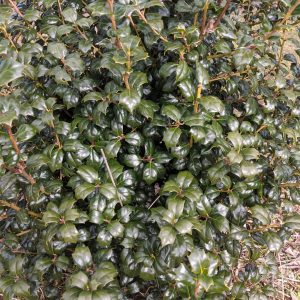Foster No. 2 Holly
| Qty | 1-4 | 5-9 | 10-39 | 40+ |
| Price per Plant | $22.50 | $7.00 | $6.50 | $5.00 |
* Buy a minimum of 10 plants and get 1 ‘Big John’ male holly pollenizer for FREE *
Out of stock
Ilex x attenuata ‘Fosteri’ – (Clone 2)
The Foster No. 2 holly is a popular hybrid holly native to the North American continent. Introduced into cultivation during the 1950s by E. E. Foster of Foster Nursery in Bessemer, Alabama, the tree is a cultivar of a commonly occurring cross between the Dahoon holly (Ilex cassine) and the American holly (Ilex opaca). Oddly, it is one of five original clones all named Foster holly by E. E. Foster. Clones one and five are no longer available in commerce, and clone four is a male plant uncommonly available. Clones two and three are female plants which are commonly available but are virtually indistinguishable. As a beautiful evergreen holly used in various landscapes, the Foster No. 2 holly is heralded as being partially self pollinating – meaning it does not require a male pollenizer to produce berries. All hollies are dioecious – meaning that male and female flowers are borne on separate plants, but the Foster No. 2 holly is also partially parthenocarpic. This means the tree can produce sterile fruit without a male pollenizer. Although not strictly required, the Foster No. 2 holly will produce berries in spectacular numbers when planted with a male holly present. Almost any male that flowers in the springtime will do. We suggest the Big John holly because of its similar genetic heritage. A medium rate grower, this holly is a pyramidally-shaped evergreen that lends itself to shape trimming. Planting instruction can be found at boydnursery.net/arrival-care-notes/.
| Classification | |
|---|---|
| Diseases & Insects | Problem Free |
| Family | Aquifoliaceae |
| Flowers | Flowers are staminate in 3 to 9 flowered cymes; pistillate solitary; dull white to yellow with a single green nodule (ovary and future berry) at the center; flowers have 4 non-functional stamens; berry-like, dull red rounded drupe, fruit is borne singly on .25" long stalks, maturing in October and persisting into winter; fruit display can be spectacular on good selections with a strong pollenizer |
| Growth Rate | |
| Hardiness Range | zone 6a – 9b *need help finding your hardiness zone? |
| Leaves | Glossy, dark olive green, elliptic to obovate, evergreen leaves (2-3" long); each leaf has between 1 to 5 well-spaced, spines per side |
| Plant Type | |
| Primary Features | |
| Sex | dioecious (Female) |
| Size | 20-30 feet tall at maturity with 10-20 foot spread |
| Sun Requirement |
What am I buying?
We sell Foster No. 2 Hollies as rooted cuttings. Taken from Wikipedia, “a plant cutting is a piece of a plant that is used in horticulture for vegetative (asexual) propagation. A piece of the stem or root of the source plant is placed in a suitable medium such as moist soil. If the conditions are suitable, the plant piece will begin to grow as a new plant independent of the parent, a process known as striking.” Put more simply, a rooted cutting is a small clone of the specimen from which it was taken. As a genetically identical clone, the cutting shares all the characteristic traits and attributes of the cultivated variety. Our rooted cuttings are 3-6 months old and 4-8 inches in stem length above the soil line. They are clipped from our private stock plants and grown in root pruning trays at our temperature controlled greenhouse.
When are plants collected?
Once your order is placed, your plants will be collected as soon as the weather permits. This time-frame is normally within 3-7 days. During heavy order periods (April-May), this collection time can grow to 10-14 days.
How are plants shipped?
All shipments are mailed via USPS Priority Mail using PirateShip.com. We monitor national weather conditions and temperatures for shipments. If at any time your order must be delayed for weather concerns, we will contact you by phone and/or email. The day that your order is completed or partially shipped, you will receive an email containing your package tracking number. You can also find this updated information by logging into your account on our website.

